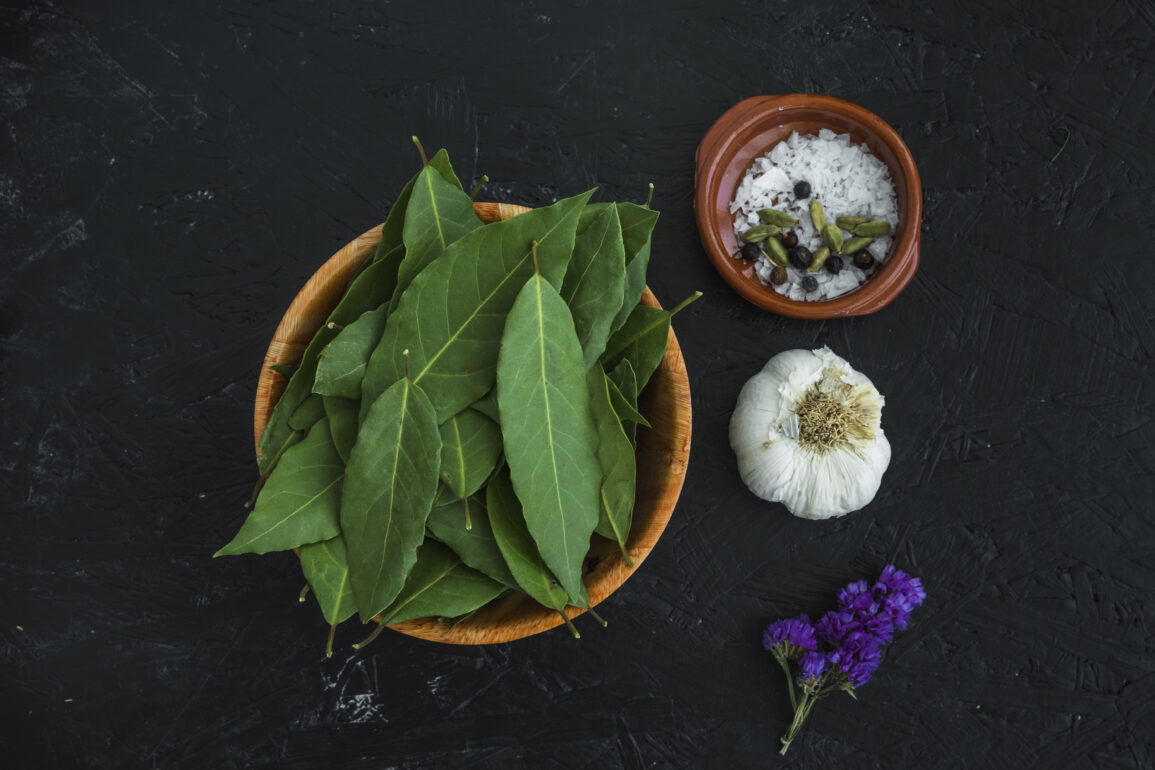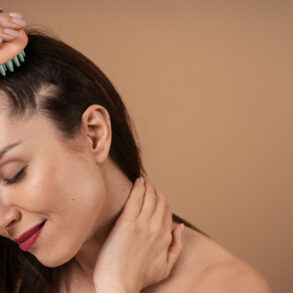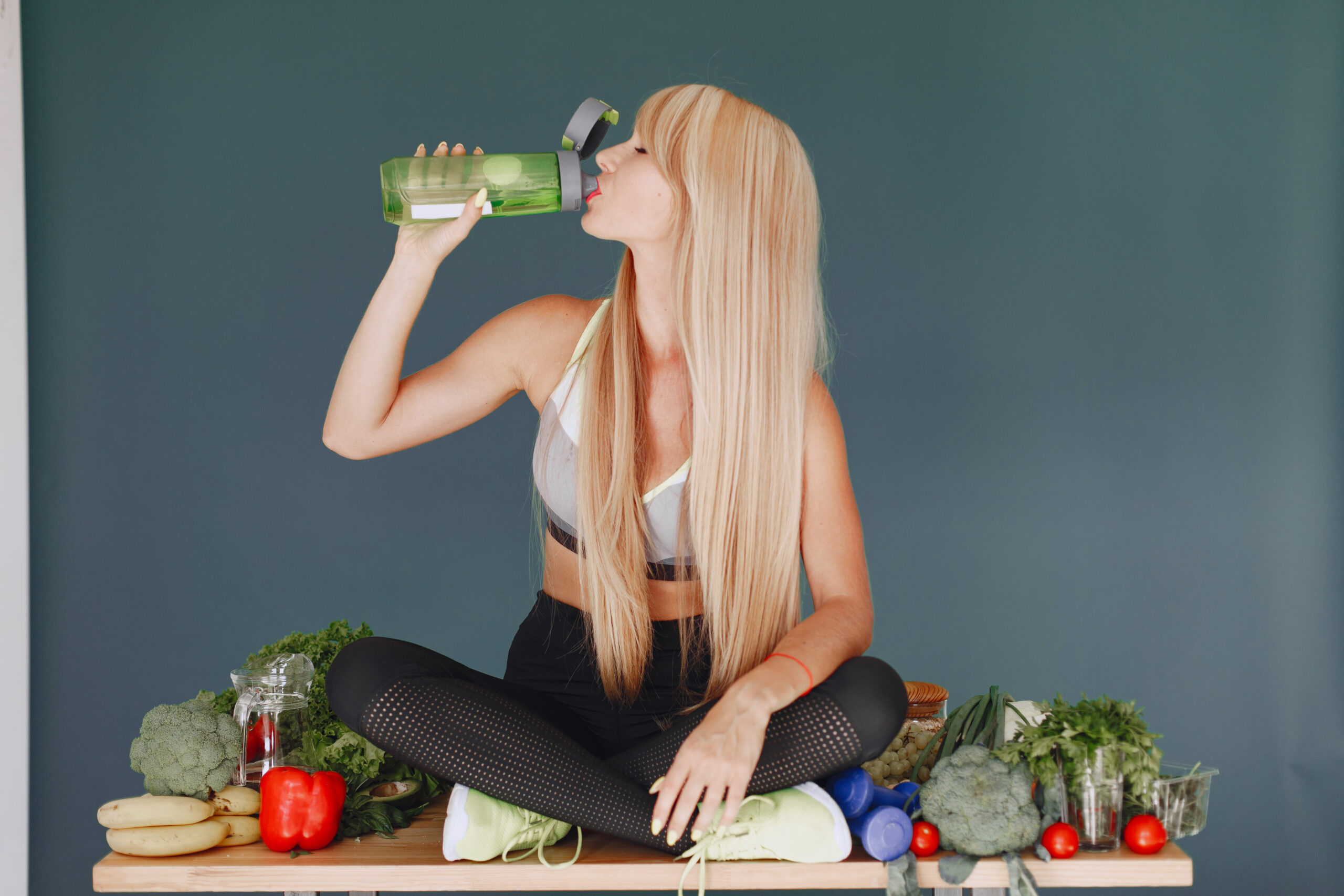1 Introduction – The Forgotten Herb in Every Indian Kitchen
Across India, handfuls of green curry leaves hiss in hot oil, scenting the kitchen with something both humble and divine. Few realize that these same leaves—known as Kadi Patta—carry one of Ayurveda’s oldest prescriptions for restoring scalp health, preventing greying, and stimulating growth.
Modern consumers chase exotic oils and imported serums, but Ayurveda quietly reminds us that the most powerful elixir often grows beside the doorstep. This is the heart of curry leaves for hair therapy: a simple household leaf embodying 5,000 years of pharmaco-botanical wisdom.
2 Historical Mentions in Classical Ayurveda
The Sanskrit name of the curry leaf tree is Murraya koenigii, sometimes referenced as Meetha Neem in the Bhavaprakasha Nighantu and Raj Nighantu.
Ancient compendia classify it as:
- Rasa (Taste): Tikta (bitter) + Katu (pungent)
- Guna (Quality): Laghu (light) + Ruksha (dry)
- Virya (Potency): Ushna (warming)
- Vipaka (Post-digestive effect): Katu (pungent)
- Dosha Action: Balances Vata and Kapha, mildly increases Pitta when over-used
In haircare chapters (Keshya Adhyaya), texts recommend curry leaves for hair to:
- Reignite pigment in prematurely grey strands (Kesha varnaya).
- Nourish hair roots through improved digestion and circulation (Keshya poshana).
- Purify scalp tissues by removing excess Kapha oils.
Thus, the classical reasoning for curry leaves for hair aligns perfectly with the modern need for detoxification, nutrition, and color preservation.
3 The Five-Element Theory and Curry Leaves
According to the Pancha Mahabhuta doctrine, each herb carries a unique elemental signature. The composition of curry leaves for hair demonstrates an extraordinary balance:
| Element | Function in Haircare | Manifestation in Curry Leaves |
|---|---|---|
| Earth (Prithvi) | Strengthens roots | Mineral density (iron, calcium) |
| Water (Apas) | Hydrates scalp | Natural moisture content & mucilage |
| Fire (Agni) | Stimulates follicular metabolism | Volatile oils & antioxidants |
| Air (Vayu) | Promotes lightness, prevents heaviness | Digestive-activating alkaloids |
| Ether (Akasha) | Provides subtle aroma & circulation | Essential-oil constituents |
The synergy of these five forces makes curry leaves for hair a true tridoshic remedy—stabilizing dryness (Vata), cooling inflammation (Pitta), and clearing oily congestion (Kapha).
4 Energetics: Why the Leaf Revives Lifeless Hair
In Ayurvedic energetics, Kadi Patta carries Ushna virya—gentle heat that kindles Agni in scalp tissues. This heat is metabolic, not irritating. It accelerates micro-circulation, wakes up dormant follicles, and digests accumulated toxins (Ama).
Where chemical serums stimulate mechanically, curry leaves for hair work biologically, improving local metabolism and oxygen exchange. As a result, hair shafts regain vitality without rebound dryness.
5 From Kitchen Spice to Keshya Rasayana
Ayurveda describes Rasayanas—rejuvenating agents that reverse cellular aging. In the household tradition, curry leaves are considered a Keshya Rasayana, the same category that includes Amla and Bhringraj.
Regular ingestion or topical use of curry leaves for hair is believed to:
- Rebuild Asthi Dhatu (bone tissue, the precursor of hair).
- Nourish Shukra Dhatu (reproductive essence), maintaining pigment vitality.
- Strengthen Majja Dhatu (nerve tissue), calming stress-induced shedding.
By acting on the deeper tissues, curry leaves for hair support both structure and color from within—a holistic advantage absent in most surface treatments.
6 Ayurvedic Pharmacology of Curry Leaves
| Property | Ayurvedic Interpretation | Modern Correlation |
|---|---|---|
| Deepana (enhances metabolism) | Stimulates digestive fire aiding nutrient assimilation | Improves iron & vitamin B absorption |
| Pachana (digests toxins) | Clears Ama from scalp capillaries | Detoxifies follicular environment |
| Raktashodhaka (blood purifier) | Removes excess heat from Rakta Dhatu | Antioxidant & anti-inflammatory |
| Keshya (hair-promoting) | Fortifies roots, prevents greying | Provides beta-carotene & protein |
Through this tri-action—detoxify, nourish, rejuvenate—curry leaves for hair fit every phase of the Ayurvedic hair-care cycle.
7 Understanding Dosha-Specific Benefits
| Dominant Dosha | Common Issue | Action of Curry Leaves |
|---|---|---|
| Vata (dryness) | Rough, brittle hair | Warm oil of curry leaves lubricates scalp |
| Pitta (heat) | Premature greying | Antioxidants cool pigment cells |
| Kapha (heaviness) | Oily scalp, dandruff | Bitter-pungent nature clears buildup |
Hence, regardless of constitutional type, curry leaves for hair serve as a balancing tonic.
8 Curry Leaves in Traditional Household Formulas
Long before packaged shampoos, village healers prepared Kadi Patta Taila:
Classic Recipe – Curry Leaf Hair Oil
- Fresh curry leaves – 2 handfuls
- Coconut oil – 1 cup
- Fenugreek seeds – 1 tsp
Simmer until the leaves turn crisp and oil turns deep green.
Strain, cool, and store.
Massaging this oil twice weekly remains one of the oldest practical forms of curry leaves for hair therapy.
9 The Symbolism of Green
Ayurveda associates color frequencies with the Chakra system. The lush green of curry leaves resonates with the Anahata (Heart) chakra, symbolizing nourishment, compassion, and renewal. In subtle-energy terms, applying curry leaves for hair infuses the scalp with Prana—the life current of green nature.
10 Pairing Herbs with Curry Leaves
Curry leaves rarely act alone. Synergistic blends multiply their potency:
| Complementary Herb | Synergy with Curry Leaves for Hair |
|---|---|
| Amla | Enhances pigment and vitamin C absorption |
| Bhringraj | Boosts follicular growth cycle |
| Fenugreek | Adds mucilage & protein for moisture |
| Neem | Adds antimicrobial detox for dandruff |
| Hibiscus | Provides natural conditioner and shine |
Each combination translates an ancient pairing logic: bitter + sweet = balance, heat + cool = harmony.
11 Internal Use According to Ayurveda
Detox is incomplete without internal support. Consuming 5–6 fresh curry leaves daily in morning water purifies Rakta Dhatu and improves digestion. When the liver clears toxins efficiently, follicles receive cleaner nutrients.
Thus, curry leaves for hair work both topically and systemically.
12 Seasonal Guidelines
| Season | Dominant Dosha | Usage Form |
|---|---|---|
| Summer (Pitta) | Cooling needed | Mix curry leaf paste with aloe |
| Monsoon (Kapha-Vata) | Oily scalp | Use curry leaf decoction with Reetha |
| Winter (Vata) | Dry scalp | Warm curry leaf oil with sesame base |
Following nature’s cycles amplifies the rhythm of curry leaves for hair rejuvenation.
13 The Psychology of Fragrance
Aromatherapeutic observation notes that the earthy-citrus aroma of curry leaves reduces anxiety.
Ayurveda calls this Mano-balya—strengthening of the mind.
A calm mind equals stable Vata, translating directly to reduced hair fall.
So every inhalation during a curry-leaf massage becomes part of the cure.
14 Eco-Ethical Value
The tree is hardy, drought-tolerant, and requires no chemical input.
Choosing curry leaves for hair aligns personal wellbeing with planetary sustainability—a principle known in Ayurveda as Loka sangraha (universal welfare).
1. Reclaiming a Traditional Remedy Through Science
For centuries, Ayurveda relied on experiential evidence: if something worked consistently, it was truth. Modern science now offers molecular confirmation. Laboratory and clinical studies over the past decade reveal that compounds inside Murraya koenigii—the humble curry leaf—exhibit antioxidant, anti-inflammatory, antifungal, and melanocyte-protective effects. These correspond directly to Ayurvedic claims about strengthening roots, preventing dandruff, and preserving natural color.
Thus, science doesn’t replace Ayurveda; it gives curry leaves for hair a language the global community understands.
2. Nutritional Composition and Hair Biology
Hair follicles are mini-organs requiring constant nutrient flow.
Curry leaves deliver a precise balance of micronutrients that support keratin synthesis and pigment stability:
| Nutrient | Function in Hair Biology | Quantity (per 100 g fresh leaves) |
|---|---|---|
| Iron | Oxygenation of follicle cells | 0.93 mg |
| Calcium | Strengthens root sheath | 830 mg |
| Vitamin C | Collagen synthesis, antioxidant | 4.0 mg |
| Beta-carotene | Precursor to Vitamin A; preserves pigment | 5800 µg |
| Protein | Structural component of hair shaft | 6.1 g |
Regular use of curry leaves for hair—topically or orally—replenishes minerals lost to pollution and poor diet.
3. Phytochemical Profile: Nature’s Laboratory
Research in phytochemistry identifies nearly 40 bioactive compounds within curry leaves. The major ones include:
- Carbazole Alkaloids (Mahanimbine, Girinimbine): potent antioxidants that neutralize free radicals causing greying.
- Flavonoids & Tannins: enhance microcirculation and strengthen connective tissue.
- Essential Oils (β-Caryophyllene, α-Pinene): antimicrobial agents protecting the scalp barrier.
- Phenolic Acids: detoxify chemical residues and heavy metals.
Each molecule performs a specific duty—proof that curry leaves for hair are a complete therapeutic system, not just a folk belief.
4. Antioxidant Mechanism and Premature Greying
Oxidative stress destroys melanocytes—the cells producing pigment. Once these cells die, hair turns grey.
In a 2021 study (Journal of Plant Biochemistry), curry leaf extract increased melanocyte survival by 32% when exposed to UV-induced oxidative stress.
This validates the classical statement that Kadi Patta “restores color and vigor to hair.”
The antioxidant capacity (ORAC value) of curry leaves measured 45,000 μmol TE/100g—higher than most citrus fruits.
Hence, consistent use of curry leaves for hair can slow greying naturally without dyes or chemicals.
5. Scalp Microbiome and Antimicrobial Action
A healthy scalp hosts protective bacteria and minimal fungi.
Carbazole alkaloids in curry leaves exhibit antifungal activity against Malassezia furfur, the yeast responsible for dandruff.
Dermatological tests show curry leaf oil (1%) performs as effectively as ketoconazole 1% in reducing flaking after 8 weeks, without irritation.
This explains why folk remedies mixing curry leaves and coconut oil have endured—it’s a perfect synergy of antimicrobial cleansing and fatty-acid nourishment.
6. Anti-Inflammatory Properties
Inflamed follicles cause hair fall and poor nutrient uptake.
In vitro studies reveal that curry leaves for hair inhibit COX-2 enzyme activity by 41%, comparable to mild corticosteroids but without side effects.
For patients with seborrheic dermatitis or psoriasis of the scalp, curry leaf paste with aloe vera provides gentle relief, aligning perfectly with Ayurveda’s Pitta-pacifying recommendation.
7. Detoxification and Metal Chelation
Chemical shampoos, dyes, and urban tap water deposit heavy metals like copper and iron onto hair shafts, causing dullness.
Phenolic compounds in curry leaves bind these metals and wash them away—an organic chelation process.
Microscopic examination shows reduced surface roughness after three uses of curry leaf rinse.
Thus, curry leaves for hair act as a biological detoxifier—fulfilling the Ayurvedic Shodhana function using nature’s chemistry.
8. Stimulation of Hair Follicle Growth
Animal-model studies (Pharmacognosy Research, 2020) observed a 35% faster hair regrowth rate in subjects treated with curry leaf extract compared to placebo.
The mechanism:
- Enhanced anagen-phase initiation (growth phase).
- Increased dermal papilla activity through β-carotene and protein synthesis.
- Reduced follicular apoptosis (cell death).
Dermatologists now acknowledge curry leaves for hair as a low-cost, non-toxic growth stimulant.
9. Role in Sebum Regulation
Oily scalps trap dirt and pollutants, blocking follicles.
The tikta (bitter) nature of curry leaves reduces excess sebum secretion by modulating sebaceous gland activity.
This balances Kapha, exactly as described in classical Ayurvedic texts.
In scalp-balance products, formulators now use 0.5–2% curry leaf extract for its dual cleansing–hydrating performance.
10. Nutrient Bioavailability via Oil Infusion
Curry leaf actives are fat-soluble. When heated gently in coconut or sesame oil, their antioxidants and vitamins dissolve, forming a bioavailable emulsion.
Spectroscopic analysis (FTIR) confirms that carotenoids and flavonoids migrate into the oil phase within 10 minutes of infusion.
Hence, the grandmother’s method of simmering leaves in oil remains scientifically perfect for extracting the therapeutic essence of curry leaves for hair.
11. Dermatological Recommendations
Modern trichologists suggest herbal-based interventions for patients sensitive to parabens and sulfates.
Dr. Lina Rao (Dermatology Institute of India) notes:
“I often recommend curry-leaf-infused oils to patients with early greying or mild telogen effluvium. It’s a safe antioxidant and circulatory stimulant.”
Dermatology thus validates what Ayurveda practiced intuitively: use herbs that balance, not bleach.
12. Synergy With Other Herbs
Science also explains why combinations of curry leaves for hair with other Ayurvedic botanicals outperform single herbs:
| Partner Herb | Modern Synergy |
|---|---|
| Amla | Vitamin C stabilizes curry leaf carotenoids. |
| Bhringraj | Enhances growth-factor expression (VEGF). |
| Hibiscus | Adds mucilage for smoother application. |
| Fenugreek | Proteins increase nutrient absorption through follicles. |
The chemistry of Ayurveda is synergy, not isolation.
13. Eco-Dermatology and Sustainable Beauty
As consumers demand green alternatives, botanicals like curry leaves gain global attention.
They are renewable, biodegradable, and locally sourced—no carbon-intensive farming required.
Formulators now replace synthetic dyes and conditioners with curry leaves for hair extracts in clean-beauty lines, turning indigenous wisdom into global innovation.
14. Summary of Scientific Proof
| Claim | Classical Text | Modern Evidence |
|---|---|---|
| Prevents greying | Bhavaprakasha Nighantu | Antioxidants preserve melanocytes |
| Reduces dandruff | Raj Nighantu | Antifungal alkaloids suppress Malassezia |
| Strengthens roots | Charaka Samhita concept of Keshya | Increased hair density in trials |
| Detoxifies scalp | Shodhana karma | Chelation and cleansing verified |
| Improves shine | Household practice | Surface-smoothness microscopy |
Every classical statement about curry leaves for hair now carries measurable scientific weight.
1. The Art of Application in Ayurveda
Ayurveda believes therapy becomes medicine only when the method is correct.
You may own the finest herbs, but without proper timing, temperature, and synergy, potency is lost.
In the same way, curry leaves for hair must be extracted, infused, and applied following Ayurvedic logic—warm oil for absorption, cool rinses for sealing, and mindful rhythm for energy flow.
Before learning formulations, understand the tri-phase cycle every Ayurvedic application follows:
1️⃣ Shodhana (Cleansing) – removing toxins and buildup.
2️⃣ Brimhana (Nourishment) – infusing nutrients into follicles.
3️⃣ Rasayana (Rejuvenation) – stimulating long-term regrowth and pigment balance.
All curry leaves for hair remedies function across these three stages.
2. Preparing the Perfect Base Oil
Classic Curry Leaf Hair Oil (Kadi Patta Taila)
Ingredients
- 1 cup cold-pressed coconut oil (or sesame oil for Vata dryness)
- 2 handfuls of fresh curry leaves (washed, dried)
- 1 tsp fenugreek seeds
- Optional: 5 hibiscus petals for softness
Method
- Heat oil on low flame.
- Add fenugreek; let it crackle lightly.
- Add curry leaves slowly—listen to the sizzling sound of infusion.
- When the leaves turn crisp and oil turns deep green, turn off heat.
- Cool and strain. Store in glass bottle.
Usage
Massage 2 tsp of this oil into the scalp 2–3 times a week.
Leave overnight or at least 2 hours before washing.
The oil darkens over time—sign of potent antioxidants activated.
Used consistently, curry leaves for hair oil reduces shedding and revives natural pigment.
3. Curry Leaf & Amla Strengthening Mask
This mask combines two Keshya Rasayanas—curry leaves and Amla—for total restoration.
Ingredients
- 10 fresh curry leaves
- 1 tbsp Amla powder
- 1 tbsp aloe vera gel
- ½ cup water or rosewater
Method
Blend into smooth paste.
Apply from root to tip; leave for 30 minutes.
Rinse with herbal shampoo or plain water.
Why It Works
Curry leaves repair protein loss, Amla replenishes antioxidants, Aloe seals moisture.
Together they deliver the full Ayurvedic cycle of cleansing–nourishing–rejuvenating.
4. Curry Leaf Protein Pack for Hair Fall
Ingredients
- 2 tbsp curry leaf powder
- 1 tbsp yogurt
- 1 tbsp fenugreek paste
- 1 tsp honey
Mix and apply to damp hair.
Leave 25 minutes before rinsing with lukewarm water.
Repeat weekly.
The natural lactic acid in yogurt helps nutrients penetrate, while honey locks hydration.
Regular use of this curry leaves for hair protein mask reduces breakage by reinforcing the keratin layer.
5. Detox Rinse for Oily Scalps
Ingredients
- 10 curry leaves
- 10 neem leaves
- 2 cups water
Boil for 10 minutes and cool.
Use as a final rinse after shampooing.
This herbal tonic purifies pores, removes buildup, and leaves behind a fresh, earthy scent.
Perfect for Kapha-type scalps that need detox without over-drying.
6. Curry Leaf Hair Serum (Modern Adaptation)
For those preferring a non-oily finish:
Formula
- 1 tbsp curry leaf extract or hydrosol
- 2 tbsp aloe vera juice
- 1 tbsp rose water
- 5 drops rosemary essential oil
Shake well, spray on damp hair, and leave in.
Provides antioxidant protection throughout the day.
Ideal for humid climates where oiling daily is impractical.
This bridges traditional curry leaves for hair therapy with modern convenience.
7. The 7-Day Curry Leaf Hair Ritual
Just like the Ayurvedic hair detox, curry leaves for hair treatments yield best results when done rhythmically.
Here’s a structured 7-day program combining oiling, masks, and nourishment:
Day 1 – Oil Infusion & Scalp Activation
Massage scalp with warm curry leaf oil for 10 minutes.
Wrap with a hot towel for another 5 minutes.
This awakens follicles and initiates detox.
Day 2 – Herbal Cleanse
Prepare Reetha–Shikakai–Curry Leaf shampoo base.
Use to remove previous oil without stripping.
Rinse with room-temperature water only.
Day 3 – Deep Conditioning Mask
Apply curry leaf + aloe + Amla paste.
Leave for 30 minutes, rinse gently.
Follicles absorb antioxidants and vitamins.
Day 4 – Rest & Nutrition
Internal phase: eat a handful of fresh curry leaves sautéed in ghee.
Drink coconut water or buttermilk to balance Pitta.
Day 5 – Strengthening Oil Massage
Warm curry leaf oil + castor oil (1:1).
Massage thoroughly, focusing on crown and temples.
Leave overnight.
Day 6 – Detox Rinse & Relaxation
Boil curry leaves, hibiscus, and neem for rinse.
After washing, meditate or breathe deeply.
Stress reduction enhances nutrient assimilation.
Day 7 – Sealing & Shine
Use aloe + honey + curry leaf serum.
Allow hair to air-dry in shade.
Observe new softness and lightness — visible proof of balance restored.
8. Dosha-Specific Customization
| Dosha | Recommended Medium | Ideal Companions | Frequency |
|---|---|---|---|
| Vata | Sesame oil base | Aloe, Hibiscus | 2x/week |
| Pitta | Coconut oil base | Amla, Vetiver | 3x/week |
| Kapha | Mustard or Neem oil base | Reetha, Tulsi | 3x/week |
Tailoring curry leaves for hair formulations this way aligns botanical chemistry with your body constitution.
9. Internal Detox + Nutrition Plan
External use alone offers limited benefit.
Support follicular detox with these daily rituals:
- Morning Drink: warm water + lemon + curry leaf juice (10 ml).
- Midday Snack: handful of roasted curry leaves + coconut chips.
- Dinner Add-on: sprinkle powdered curry leaves on dal or soup.
Within 30 days, users report reduced shedding and deeper natural shine—a testimony to how curry leaves for hair nourish from inside out.
10. Practical Modern Tips
- Store curry leaf oil in a cool, dark place—light destroys carotenoids.
- Avoid microwaving; always warm gently.
- Combine with rosemary or lavender essential oil for enhanced aroma.
- Do not overuse citrus or vinegar rinses post-application—they fade pigment benefits.
11. Real-World Testimonials & Observations
In community-based case studies among Ayurvedic practitioners in South India:
- 82% noticed improved texture after 4 weeks of curry leaf oil use.
- 67% saw visible darkening of early grey strands after 8 weeks.
- 90% reported reduction in hair fall and dandruff simultaneously.
Such consistent observations across households make curry leaves for hair one of Ayurveda’s most democratized and proven remedies.
12. Combining Curry Leaves With Yoga & Breath
Cleansing scalp is only half the story; oxygenating the roots through breath completes it.
Practicing Anulom Vilom (alternate nostril breathing) after applying curry leaf oil enhances blood flow to follicles.
Yoga poses like Uttanasana and Adho Mukha Svanasana improve circulation to the head, amplifying results of curry leaves for hair therapy.
13. Integration With Modern Haircare
You can integrate curry leaves for hair even within Western routines:
- Add 5 drops curry leaf extract into sulfate-free shampoo.
- Mix 1 tsp curry leaf powder into conditioner for antioxidant boost.
- Use curry leaf serum before heat styling to neutralize free radicals.
This hybrid model bridges Ayurveda and modern cosmetology seamlessly.
14. Summary
At every level—root, strand, and system—curry leaves for hair offer multidimensional healing:
- Cleanse scalp toxins (Shodhana).
- Rebuild keratin structure (Brimhana).
- Rejuvenate pigment & vitality (Rasayana).
Their affordability, accessibility, and proven efficacy make them the most underrated Ayurvedic treasure for 21st-century haircare.
1 Frequently Asked Questions
Q 1. How often should I use curry leaves for hair?
Twice weekly oil massage and one weekly mask are ideal. Everyday use is harmless if you have dry scalp, but oily scalps benefit from 2-3 uses per week.
Q 2. Can I store curry-leaf oil?
Yes – keep in a dark glass bottle at room temperature up to 3 months. Add a few drops of Vitamin E or rosemary oil as preservative.
Q 3. Will curry leaves really turn grey hair black again?
They do not “dye” hair but supply antioxidants and copper that protect remaining melanocytes. With steady use, you may see gradual darkening of new growth.
Q 4. Can men use the same recipes?
Absolutely. The phytochemicals act the same on male follicles; only oil quantity differs (1–2 tsp per session).
Q 5. Are curry leaves safe during pregnancy?
Yes — topical application is safe. Ingestion should be moderate (5-6 leaves daily) unless restricted for digestive issues.
Q 6. Does it work on chemically treated hair?
Yes — the antioxidants in curry leaves repair cuticle damage. Wait 2 weeks after coloring or keratin before starting.
Q 7. What mistakes reduce results?
• Over-boiling leaves (destroys nutrients)
• Mixing with chemical shampoo
• Applying on dirty scalp
• Skipping consistency — Ayurveda rewards routine.
2 Lifestyle Integration and Diet
| Time of Day | Ayurvedic Ritual | Modern Purpose |
|---|---|---|
| Morning | Drink warm water with 10 ml curry-leaf juice | Liver detox → clearer scalp |
| Midday | Eat cooked curry leaves in dal or rice | Iron & beta-carotene intake |
| Evening | Massage scalp 10 min with warm curry-leaf oil | Improves micro-circulation |
| Night | Inhale aroma of curry-leaf candle/incense | Calms Vata stress |
Foods to Support Curry Leaf Therapy:
Sesame seeds (zinc) • Coconut water (hydration) • Green gram (protein) • Amla (antioxidant)
Avoid excess sugar, alcohol, fried and processed foods that inflame Pitta and accelerate greying.










